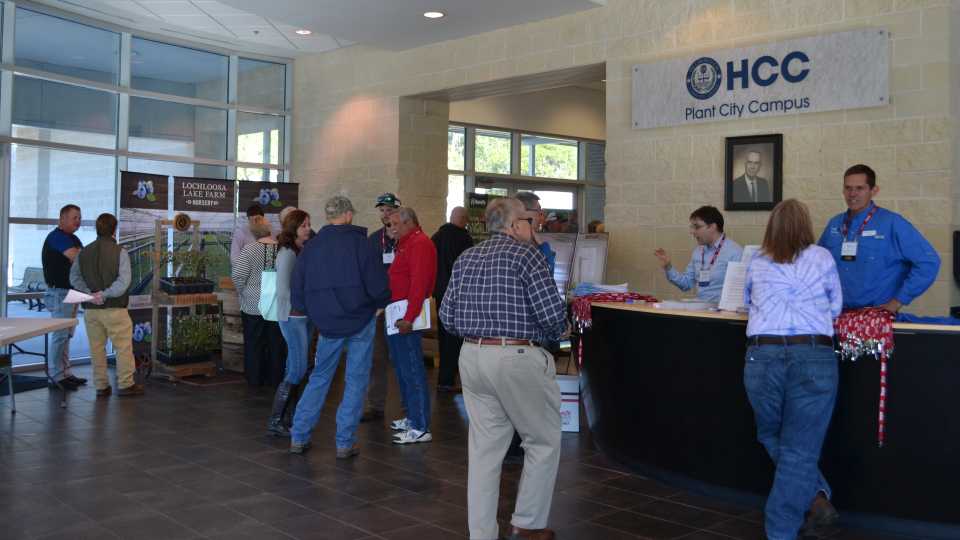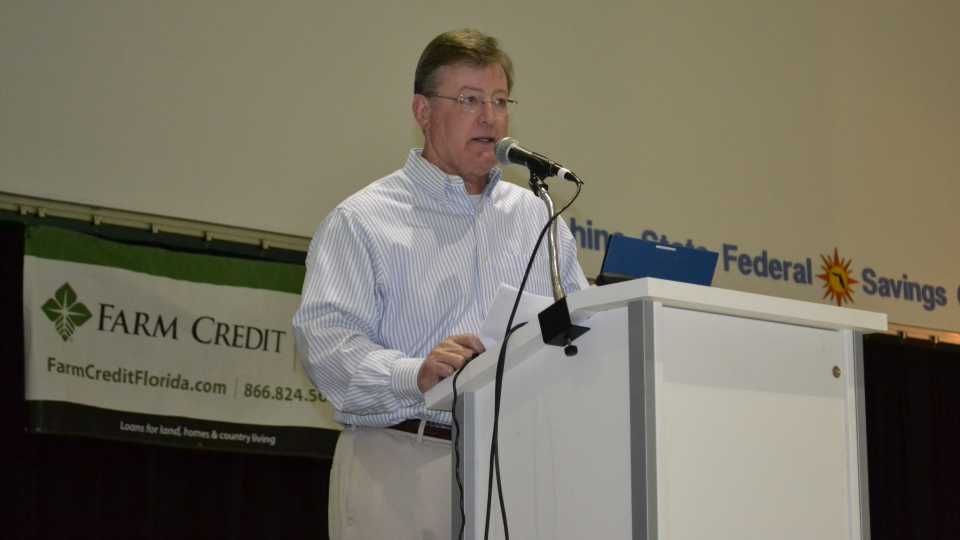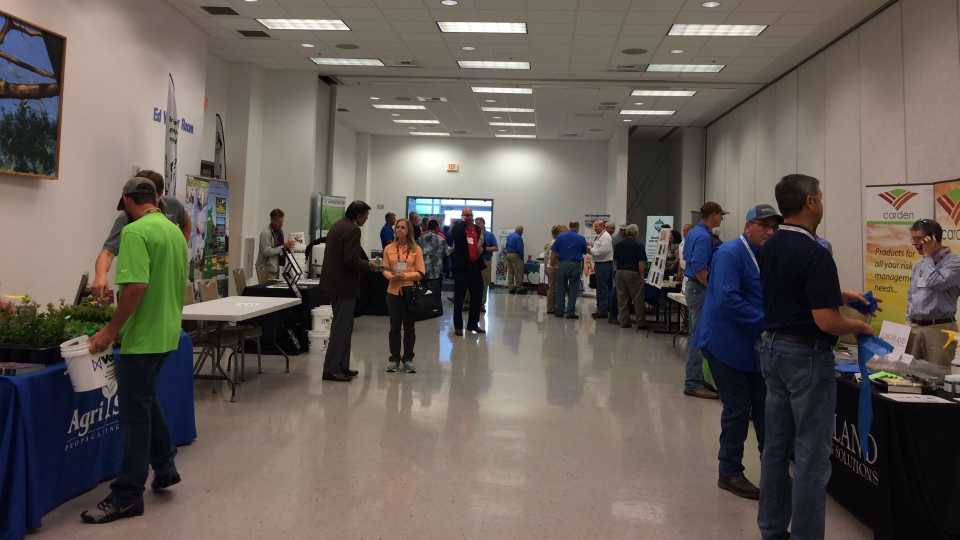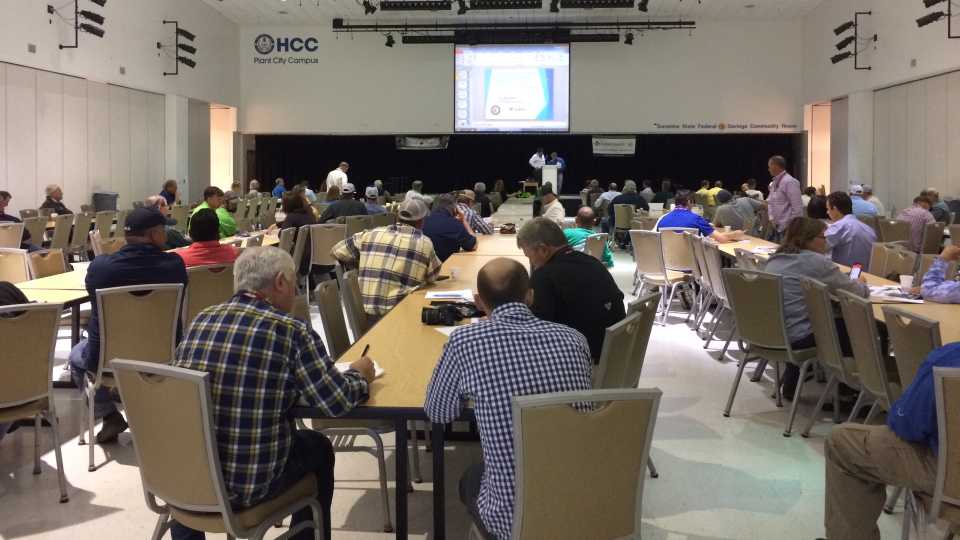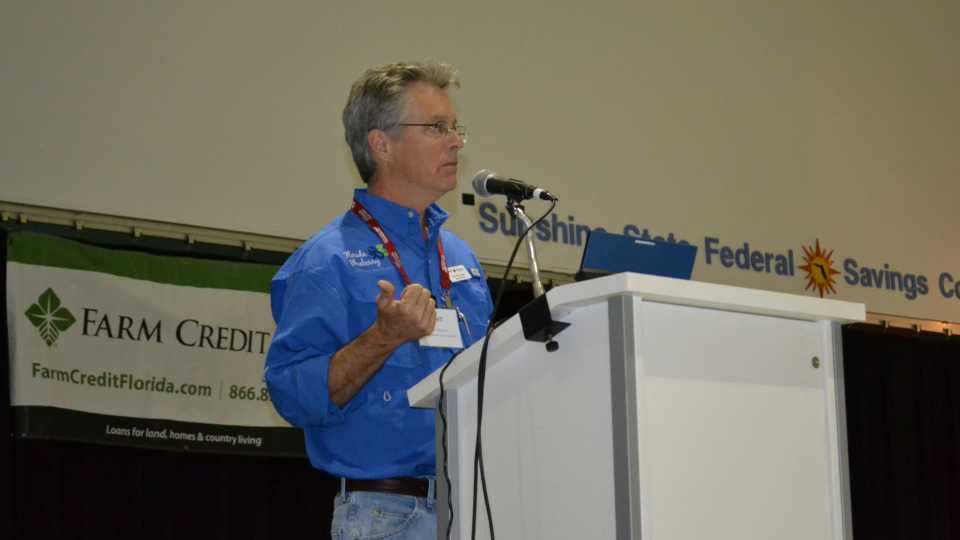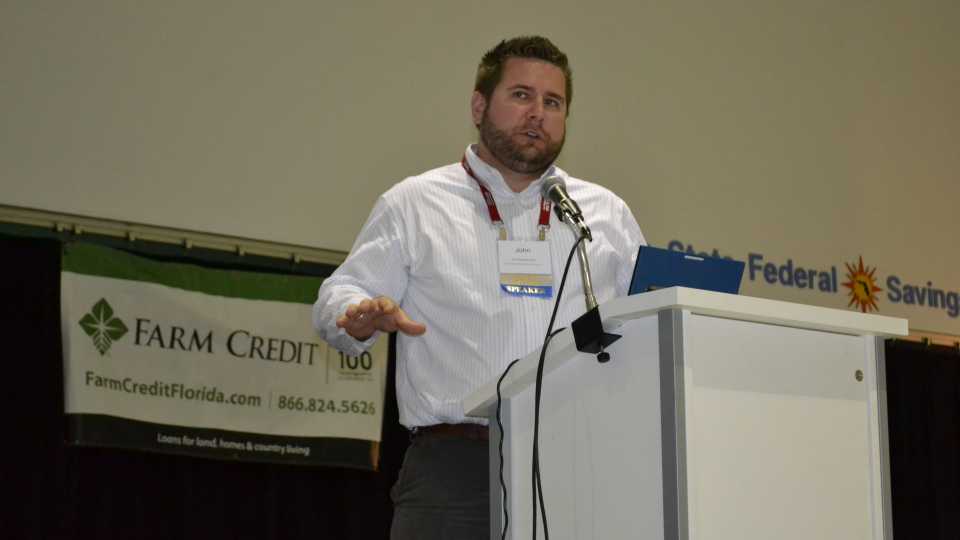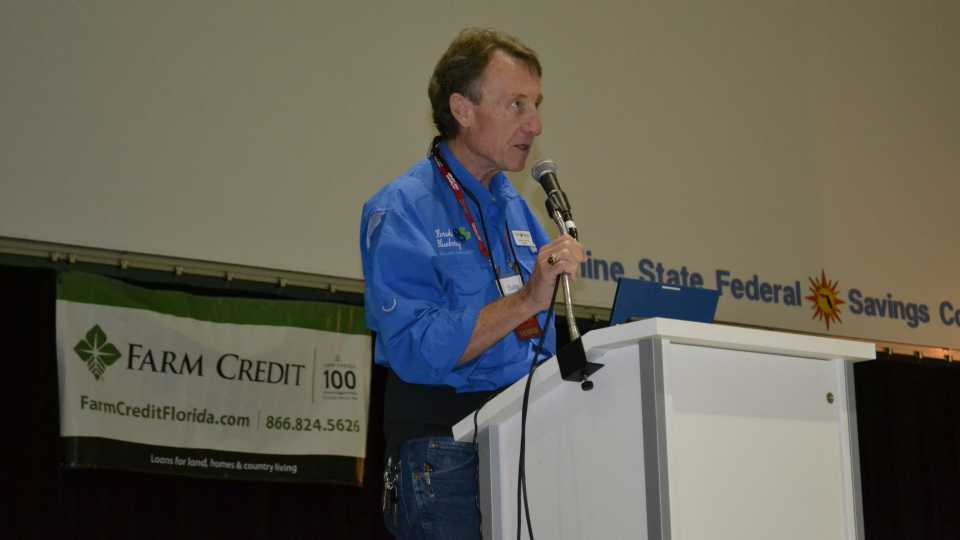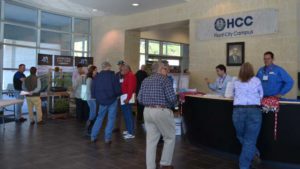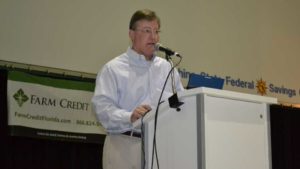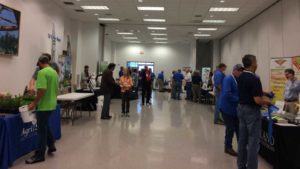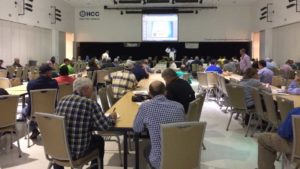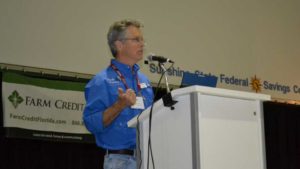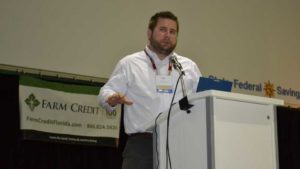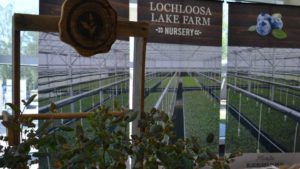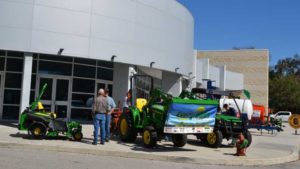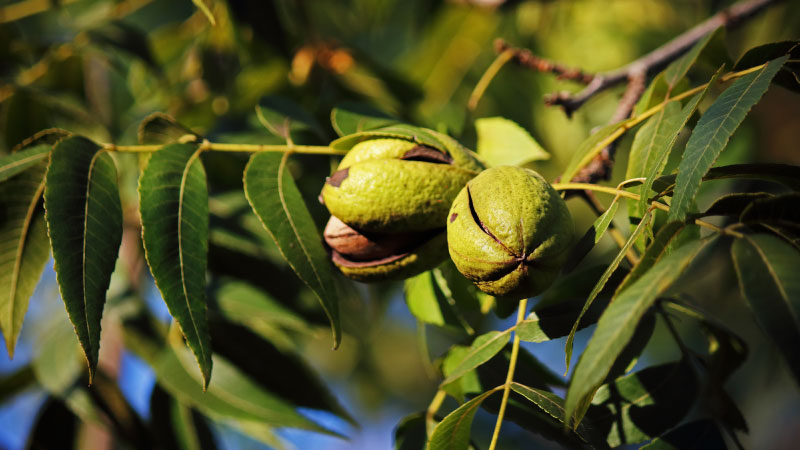Florida Blueberry Growers Counting on a Comeback
The 2016 Florida blueberry season was certainly one to forget for growers. With a strong El Niño in place, topsy-turvy weather events and a marked lack of chill hours caused problems aplenty in fields across the Sunshine State.
Seeking counsel before the 2017 season kicks into high gear, growers, researchers, industry suppliers, and other stakeholders had one last chance to gather during the Florida Blueberry Growers Association (FBGA) Spring Meeting at Hillsborough County Community College’s Trinkle Center in Plant City.
The single-day short course and trade show is one of two meetings held by the association during the year. Looking through the halls of the tradeshow area and around the educational session room, it was apparent attendance was down quite a bit from the usual turnout. During his welcome speech, FBGA President Dudley Calfee addressed the thin crowd, citing the fall meeting’s nearly two-month delay – thanks to Hurricane Matthew – accounted for the day’s high absenteeism. “Not only did Mother Nature beat us around with low chill hours, but she also gave us a hurricane,” he remarked.
Among last season’s struggles, there was a real problem with under-reporting losses, according to Calfee. “I can’t tell you exactly what we left on the table as far as federal (disaster) grants, but, to say it’s several million dollars would not be an understatement.”
Calfee advised attendees to get to know their local Farm Service Agency agent if they don’t already.
Bacterial Wilt Warning
If Florida blueberry growers didn’t already have enough on their plates, one of the education presentations addressed a new threat: bacterial wilt. Discovered last fall on several farms in Central Florida (now five total), the bacteria (Ralstonia solanacearum) presents itself similar to Xylella and bacterial leaf scorch.

The bacteria Ralstonia solanacearum can survive for years in soil, slowly spreading down and across rows of blueberry leaving large circular patches of dead and dying plants.
Photo by Phil Harmon, UF/IFAS
Jeff Williamson, UF/IFAS Professor, Extension Horticulturist, and moderator of the short course, led the presentation for colleague Dr. Phil Harmon, who is currently working to uncover more about this pathogen. Williamson said the only cultivar this disease has affected so far is ‘Arcadia.’ “If you have a problem (with this disease) on your farm, don’t plant ‘Arcadia.’”
Speaking on recommendations provided by Harmon, Williamson advised those considering planting ‘Arcadia’ to be cautious and aware. “It could be a serious problem depending on how widespread it is,” he said.
Growth Opportunity
What will blueberry production in Florida look like in 2020? This was part of the discussion of a presentation given by Cort Brazelton of Lowell, OR-based Fall Creek Farm & Nursery. Unique to the other talks given during the event, Brazelton joined in via video conference.
According to Brazelton, the blueberry industry is experiencing “incredible growth” worldwide. However, when it compares to the scale of strawberries, the “little blue dynamos” have a long way to go.
Scanning ahead to 2020, Brazelton predicts Florida’s market window ramping up earlier (February and early March) thanks to advances in production practices and protected culture. This will be necessary to keep up with increasing competition.
To stay competitive in a global market, Brazelton said if he was a Florida grower, he’d make sure to
- Leverage strengths (buy local movement)
- Maximize yields
- Concentrate on quality
- Be efficient (growing, packing, marketing)
- Invest in innovation (planting, protection, and harvesting)
“You’re gonna need to stay ahead of the curve,” he concluded.
Scroll through the photo gallery above for more highlights from the event.




